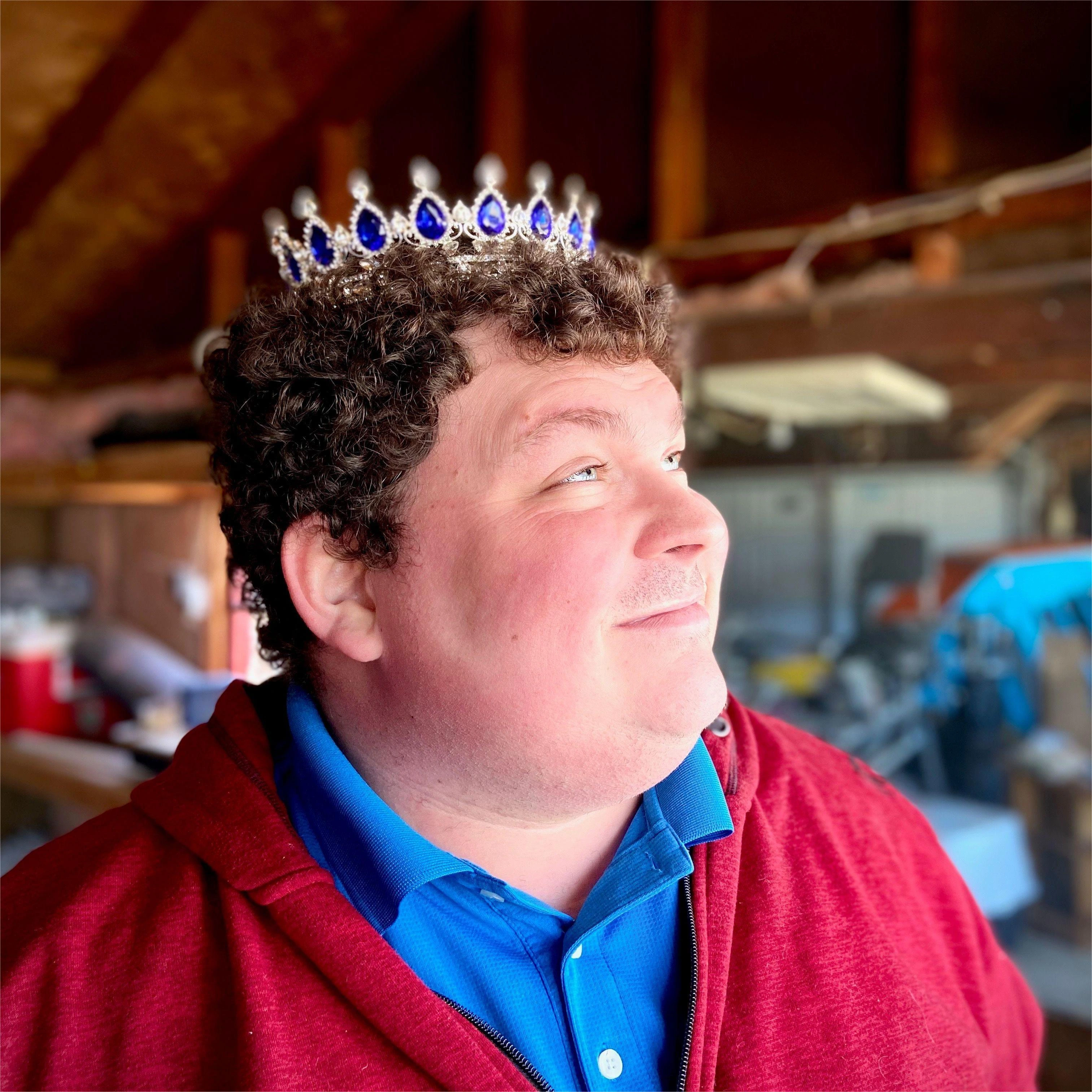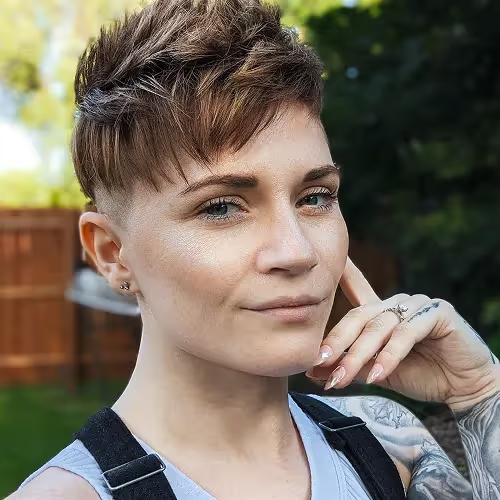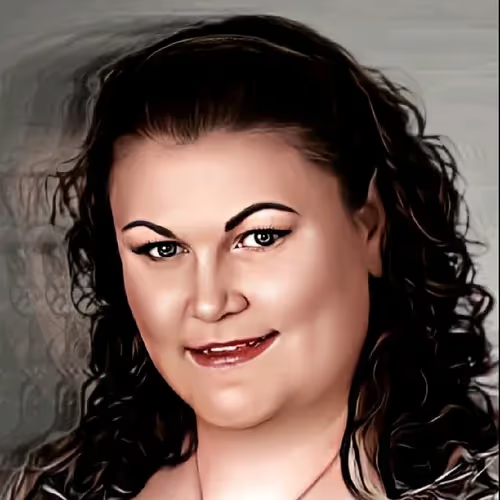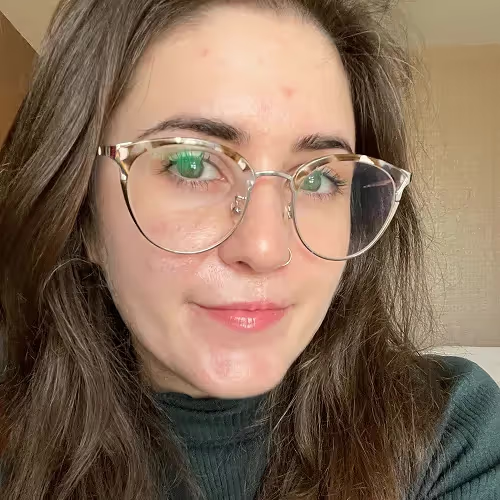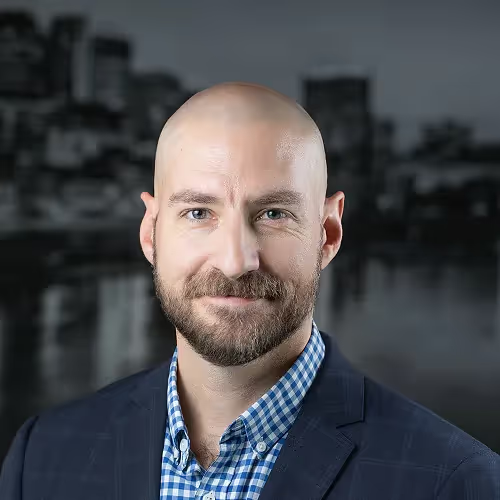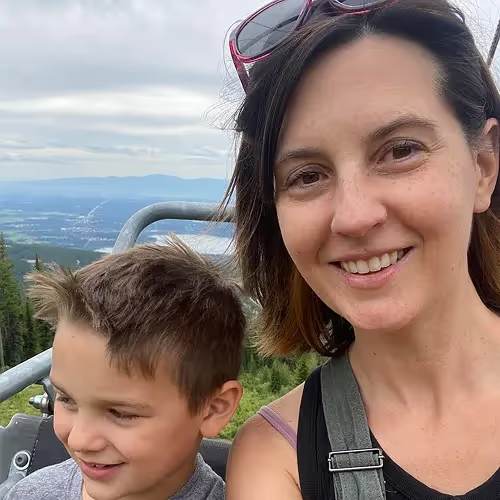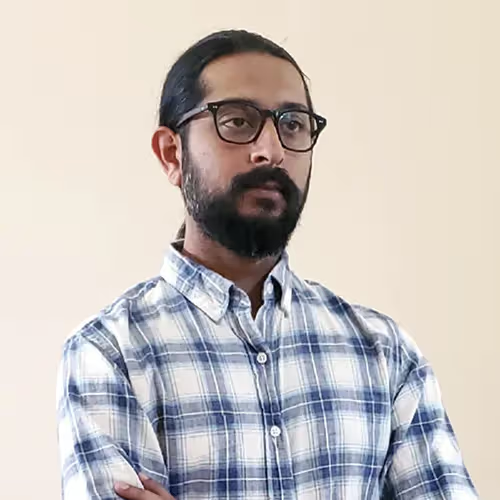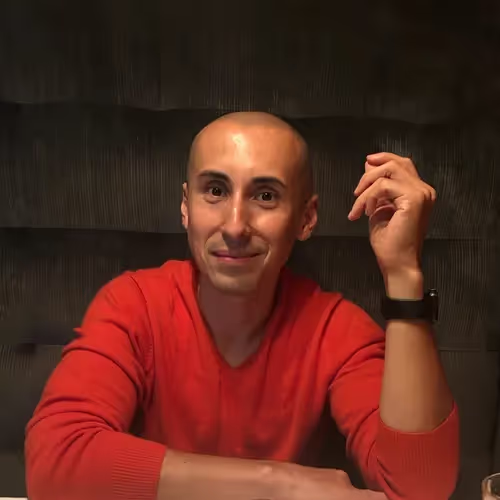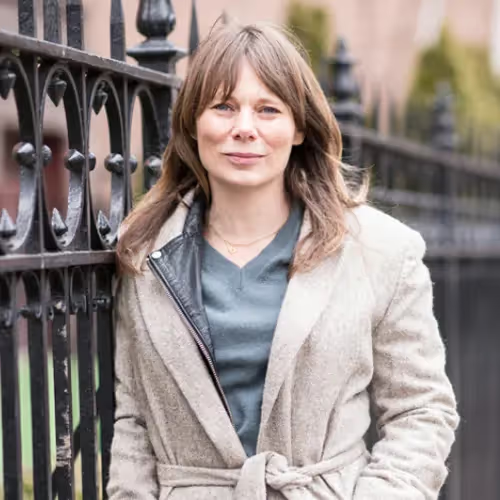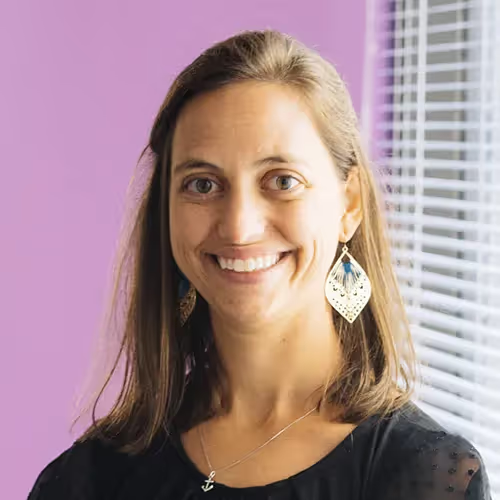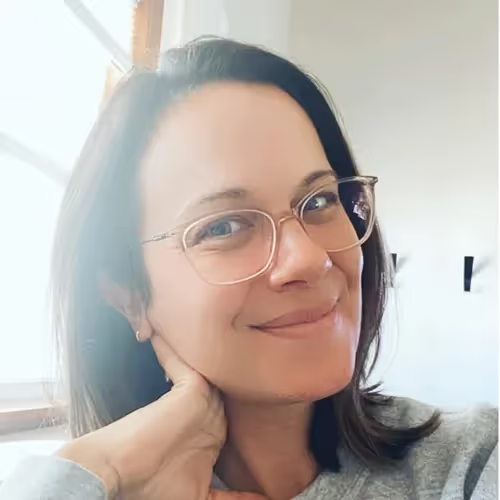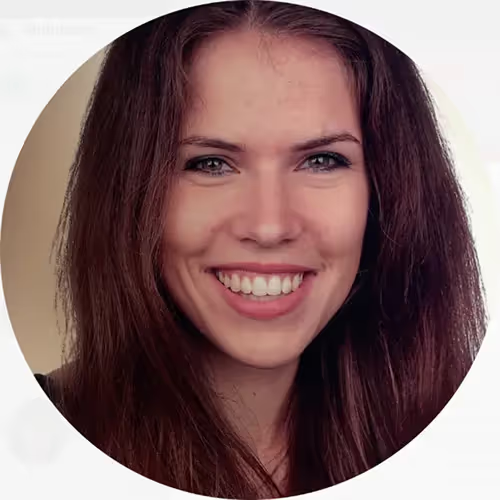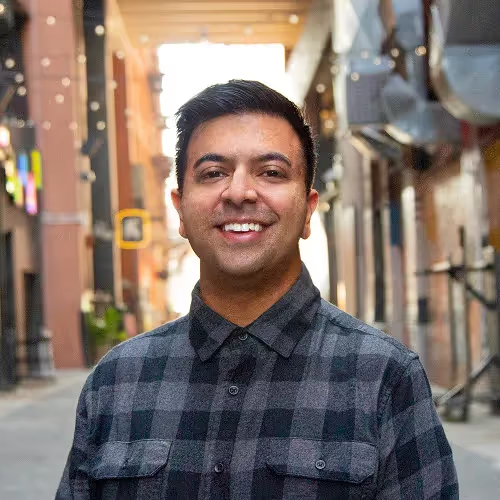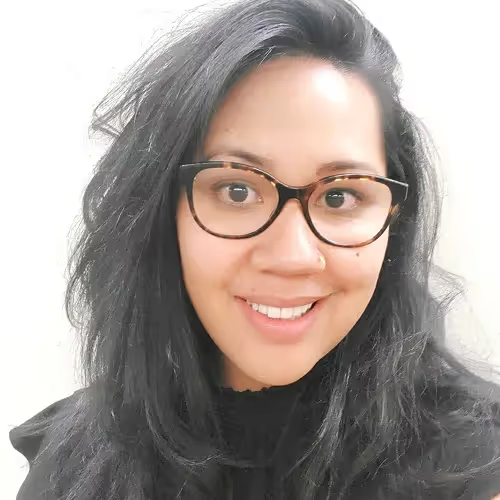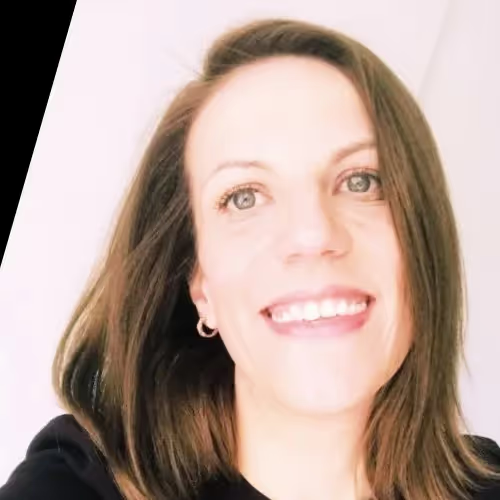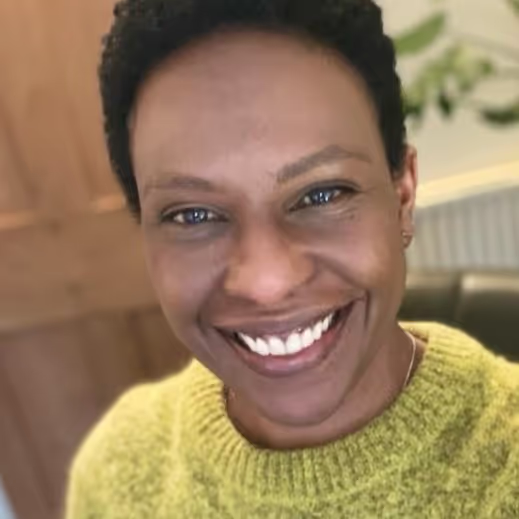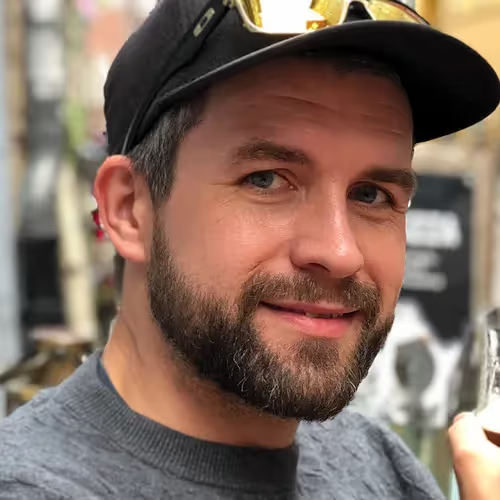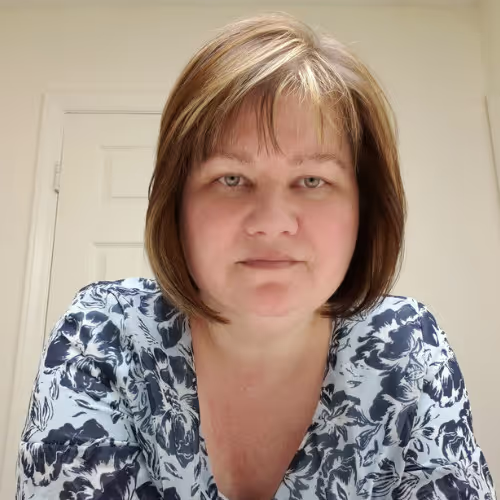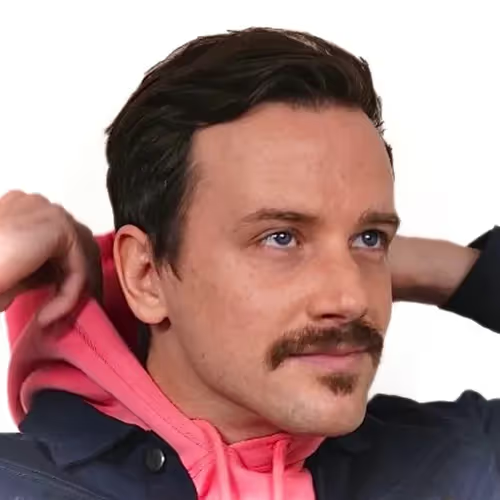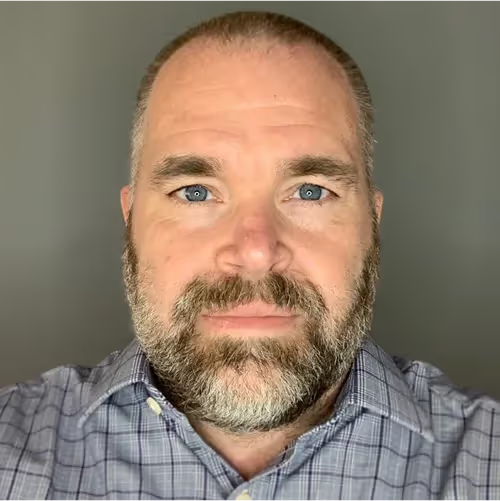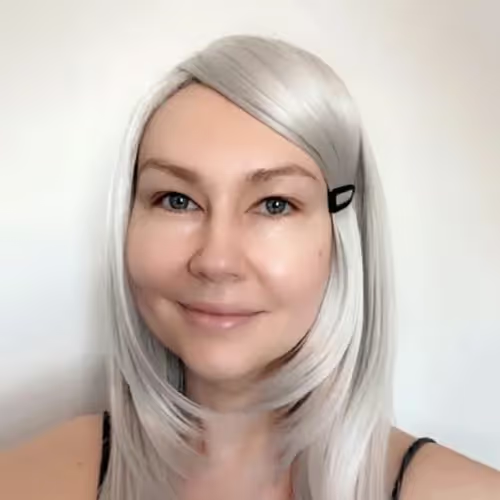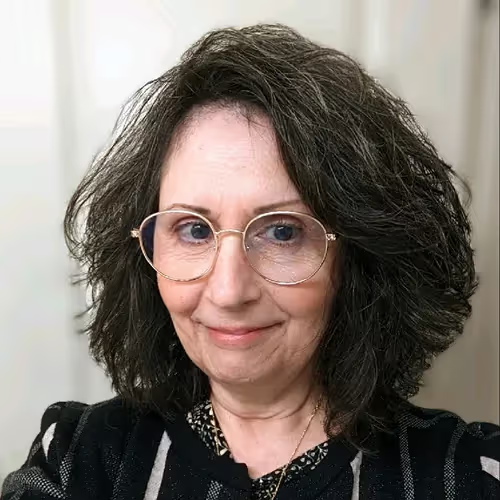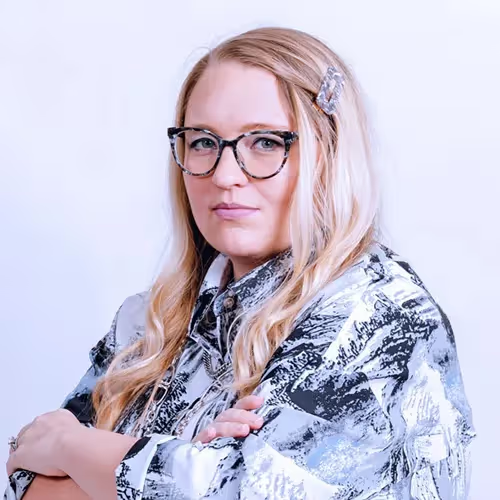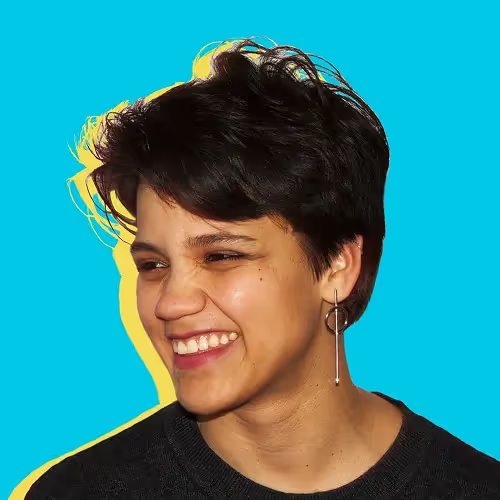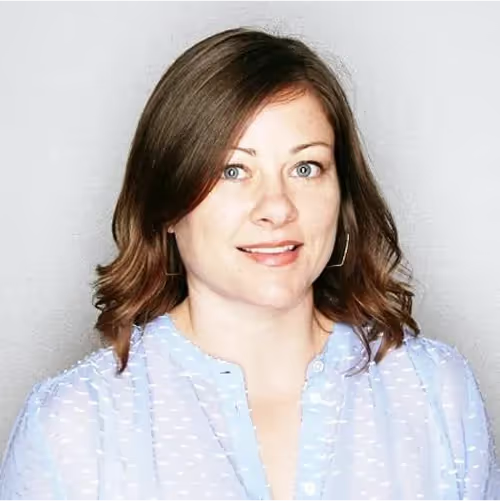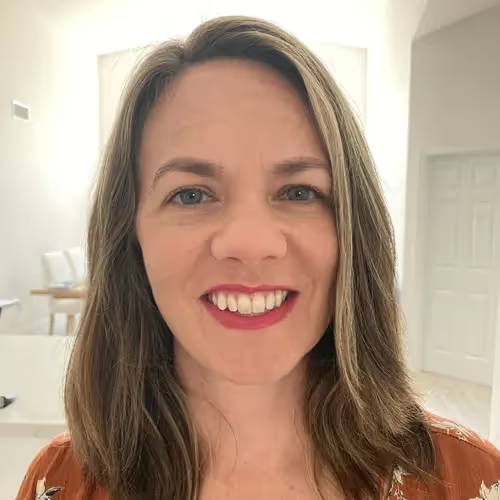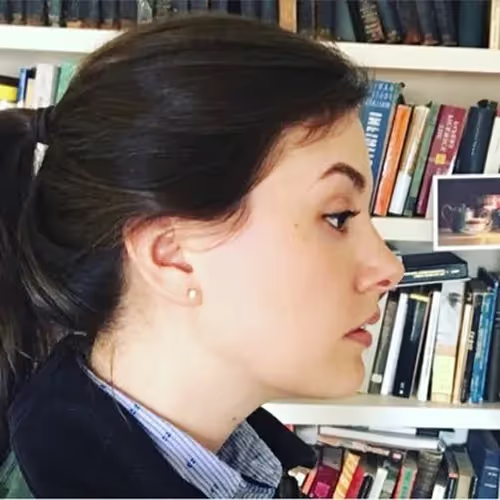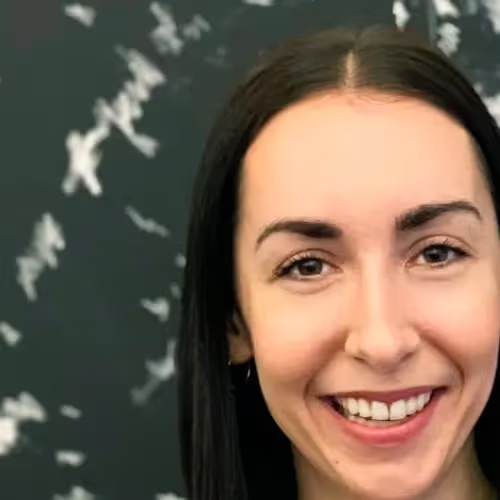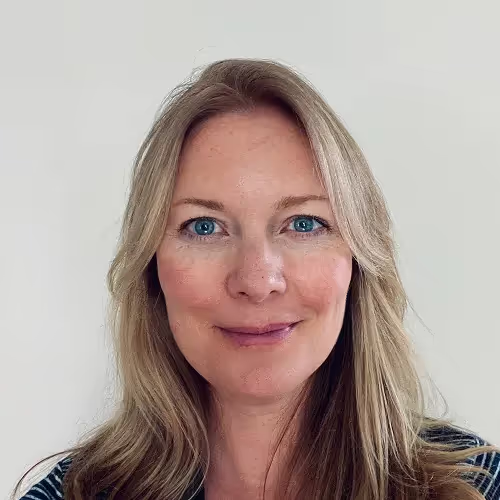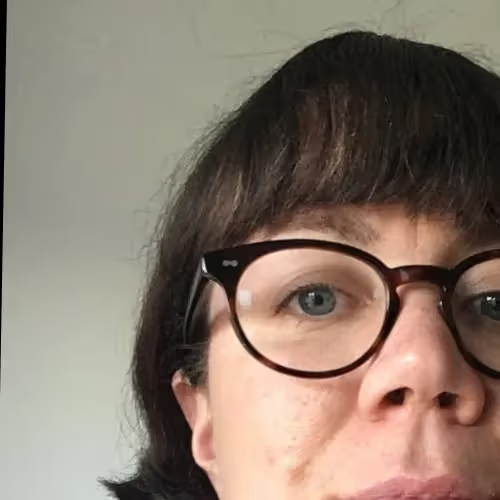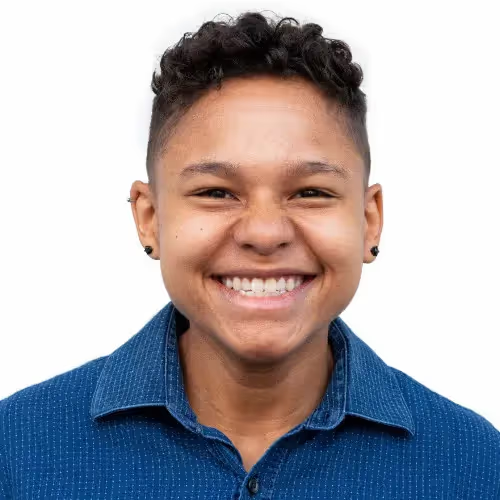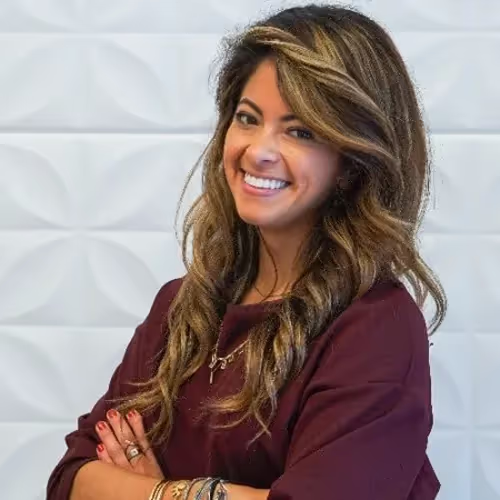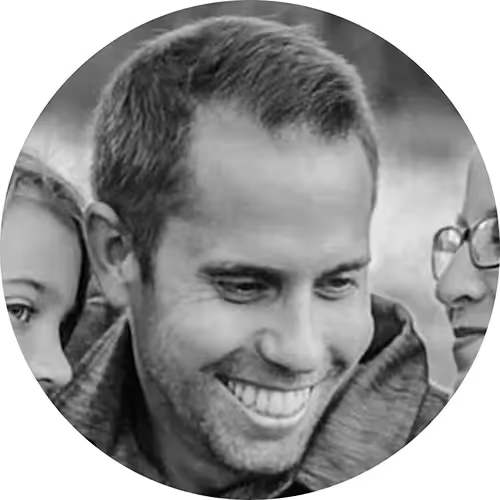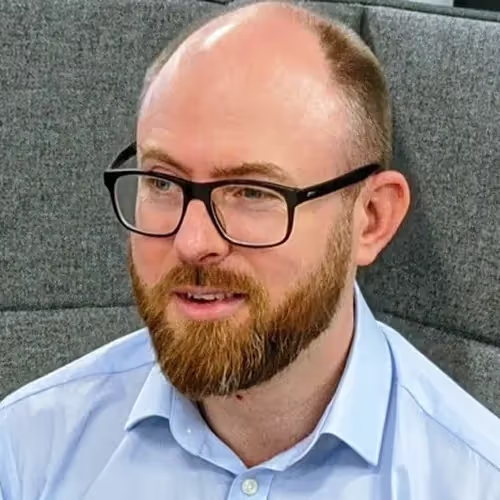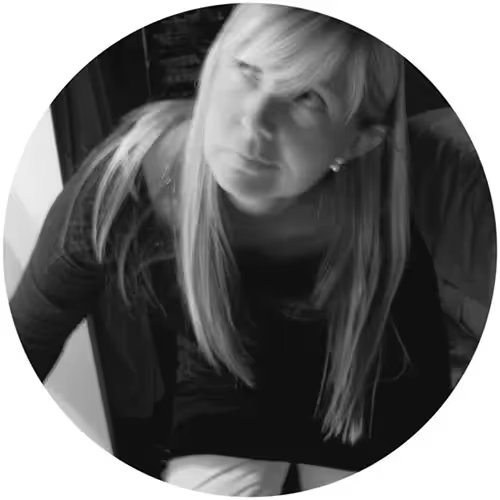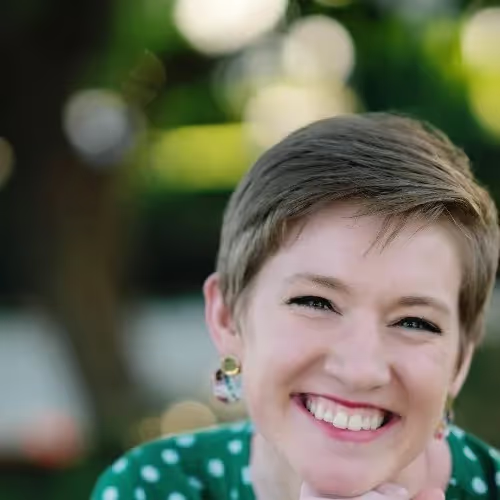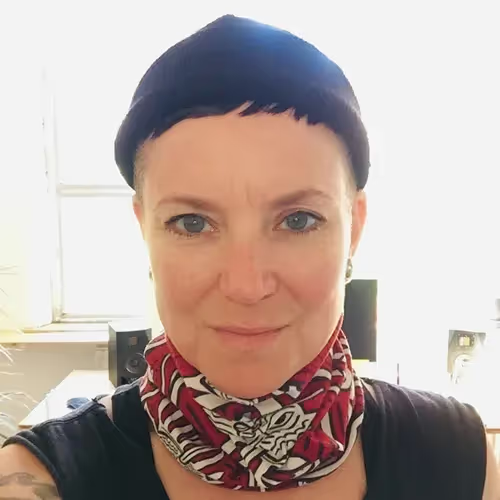What's up OOUXers. This episode with Scott Kuby, the author of writing for designers and the brains behind the concept of content ecosystem mapping was so good. It's spilling over into an OOUX happy hour. So near the end of this conversation, I actually whip out my own attempt at the content ecosystem of my OOUX content world, and a link to that diagram that I show him is in the show notes.
If you want to take a look at it. And so many light bulbs started going off as he started giving me feedback on my, my misguided first attempt. So we ran out of time on the podcast, but at OOUX happy hour, which is happening at noon this time, noon Eastern standard time on March 3rd, 2022. So at OOUX happy hour, Scott will continue working through my content ecosystem as an example.
So make sure you sign up for that and join us live for this. We always do a few breakout rooms during happy hour. We do a lot of Q and A. So this is a great way to meet others that are interested in content and information architecture and structured data, and of course, object-oriented UX. So go to meetup.com/objectorientedux,
or find the direct link in the show notes. Okay. So one other thing, before we get into this conversation, I have to tell you, I already tried something out that I learned from Scott in this episode. So one of the benefits of a content ecosystem map is actually to show your team or your client or your stakeholders, how convoluted your ecosystem actually is.
So you can create a current state and then you can create a recommended state and you can show that contrast. And I was thinking, this is a content, a content ecosystem map in what I call a system model are very, very similar. It's just the scope of them are different. And we'll talk about that a little bit more in the episode,
a lot more in that episode, but I was thinking about this and I was like, this would be so smart to do for a system model. And often, I mean, I will often skip system modeling and go straight to the Nested Object Matrix just because it's so much more scalable, but the Nested Object Matrix, one thing that it doesn't do it doesn't really show you that level of convolutedness.
If the connections, if you have potentially too many objects and the connections don't make a whole lot of sense. So with a system model, you can much more easily show that contrast visually. So I actually did this with a, with a recent client and it was just so helpful to see the, to see that contrast between the complexity that they're currently dealing with and maintaining,
and this potential future state of a much more simplified, clean version of the system model. So Scott does this with content ecosystem mapping. We could do it with our system modeling and I believe every OOUXer is going to be really excited about what Scott's talking about. It's kind of like, it really does feel like OOUXing your organization, which is just kind of mind blowing to think about.
So this Is really cool stuff. I really hope y'all enjoy the conversation. All right, let's go talk to Scott. Welcome to the object-oriented UX podcast, a podcast about tackling complexity head-on, gracefully organizing massive amounts of information and designing scalable, future-proof, and of course, naturally intuitive object-oriented user experiences. And OOUXer is a powerful blend of information architect,
business analyst, facilitator, and UX strategist. If this sounds like you, or what you aspire to — you are so in the right place. I'm Sophia Prater, UX designer, chief evangelist of object-oriented UX, and your host. Let's jump into it. Scott Kuby, welcome to the object-oriented UX podcast. Hey, thanks for having me happy to be here.
Yes, I am so excited for you to be here. So I've got to say first loved the book Writing for Designers. It's a quick and easy read. It is such a practical guide to just writing and general. I know it's more geared toward interface writing for UX writers, but I'm already using a lot of what I learned in my newsletters and in my articles.
So thank you for that. I highly recommend the book. It is everybody should go buy it right now. But my favorite actually my favorite part of the book is actually one of the last lines it's from your bio. And it was just, it says a lot because there's a lot of gold in this and this book. So in your bio, I think it's the end of your bio.
You say, Scott loves a good framework and finding ways to make esoteric design topics a bit more practical. And I read that. I was like, oh, we're going to get a log. You can just like, copy and paste that into my bio. It's basically like, this is what I do. So, so yeah, that's really cool.
I appreciate that. Yeah. What do you think it is about your personality? That like you like the design of the design process, you like to make frameworks and just kind of like making these esoteric things more practical? Like where does that come from, Boy? You know, if I could totally unpack that, I'd probably be a happier, healthier person.
I don't, I don't totally know, But you know, I think, you know, candidly, I think there's a bit of anxiousness and awkwardness in my personality and my whole life of just wanting, I really like moderated experiences. You know, I'm like, I'm more comfortable at a board game night than just a house party. Cause there's, there's a structure there,
right? It's like, okay, we're going to start playing the game. At some point game has rules, follow the rules, play the game, everyone a good time. You say, thank you. You know, everyone goes home. And so I've just always been like to alleviate the anxieties that I have. Like I just like to unpack how things work.
And so like feeling like a little bit of an observer, I don't think I'm unique in this personality and in the UX industry. But I think a lot of folks that I, I know in this field, they, they like to observe from a distance to a certain extent and get a feel for how things work and uncovering that and describing it tends to be more interesting than like actually participating in it.
So like once I've sort of gotten a feel for the thing and what makes an organization tick or what makes a product team tick or a given technique or methodology in our industry then like, I, you know, my own interest for like then going super deep and continuing to practice it kind of wanes at that point. Like I want to uncover how something else works and,
and learn it sort of the metal level, how it all fits together. So that's, that's really interesting. And we definitely have that in common as far as like liking to structuring social situations. I'm definitely the person that like, after a trip, I'll want everybody to say, like, what was the high and the low and the weirdest part like I'll have like,
like for conversations, I'll, I'll like create little frameworks or like I'm the person at Thanksgiving who wants everybody to go around the table and say three things that they're thankful for. Like, that's, that's me creating, creating like little games around, around getting, even getting to know somebody is just, I love that stuff. So there's so many questions I did have actually about the book.
Maybe that's another episode, but what I really want to talk about today because you are the resident experts on content ecosystem mapping. So we've really, we've really, really got to get into that. So like I said before, highly recommend writing for designers, just anybody who writes go buy it, but we've got you here and this is what we're going to be talking about.
So just speaking of like, like I had mentioned that you could take that line from your bio and copy and paste it into my bio. I was rereading your content ecosystem series a, I think it's on the brain traffic blog. And there was just so many lights. I was like, oh, you can copy and paste that into an article on OOUX like,
we're just so on the same wavelength, it's kind of uncanny because we're using this very similar approaches to solve related, but different problems. And so it just, some of those similarities, like we both start with noun foraging, figuring out what the nouns are. That's kind of where the process, where your process, it seems like where that starts. And I want to talk more about that,
but we also are constantly iterating finding the truth of the system and like creating these maps and diagrams that express reality to make sure that we're all on the same page. Right. And that we're getting alignment that we're using the same word to describe the same things about different words to describe the same thing or the same words to describe different things. So just shout,
just, I just want everybody that's listening all the OOUX series. If you have not heard of content ecosystems, just get really excited. Y'all are gonna love this. I'm really gonna love this. So, okay. Scott, what is a content ecosystem? Can you give us the high level on what this actually is? Yeah. So there's, there's really kind of two parts of it.
I imagine this is true of a lot of design methodologies, but there's the deliverable and there's the process. So a content ecosystem map or containing cause system model, I don't have a strong preference. That's a, it's a visual artifact diagram and effectively it is a concept model, which I'm sure your audience is familiar with. We can talk more about that,
but it's a concept model with a specific point of view, really, which is to document the organization's own understanding of all the stuff that comprises their content ecosystem. Now that's typically how I talk about it. Cause I'm a content strategist. If you wanted to call it an organizational ecosystem, a product ecosystem, we can get into that too, but it's a,
it's a picture of your content reality. So that's the diagram. The process is the more interesting part of, for me. I think that maybe what differentiates it a little bit from a lot of methodologies, even content modeling or a lot of the OOUX approaches that you talk about is I'm, I'm much more interested. And I think a lot of information architects are this way in who's in the room and who's having the conversation that leads to the creation of this diagram.
And what are we all learning from each other from having to talk about what really is this thing? How does it relate to the other thing? And what's the big idea here. So that sort of process of going through it with stakeholders ended up being a big part of my content strategy practice, especially when I was in an agency role, but those are sort of the two sides of it.
And I definitely want to talk more about that process and the kind of knots that get untangled. But I just want you to know that in my notes here, I say, you know, ask, ask Scott Kuby what does a content ecosystem? And then in parentheses, it says organizational ecosystem, question mark for everyone. Question mark. So when I was looking at these,
these models that you done, I was like, yes, this is coming from a content lens, but it could, you could even take a little bit of a, of a broader approach and really it's mapping out all the things that make up an organization. A lot of that is going to be content for your content types and your objects. So objects just being a little bit of a more broad term for content type.
So in a, you know, in a, in some sort of application, your object might even be a user profile or user generated content might be some of the objects as well as, as well as the conduct you're creating internally. So, so yeah, we're definitely on the same wavelength on that as well. Okay. Before we get into process,
you said something and I want you to just elaborate on this. You said something in one of your, one of your articles that I just loved. He said, you need to become a content ecologist. So, okay. We know what a content or getting to what a content ecosystem is. Cause I want you to pay the board's detailed picture, but what is a content ecologist?
What does that mean? Yeah, so I think, you know, I I'm, my, my coworkers always make fun of me for my metaphors, cause I'll just, I will extend and extend and extend, you know, take extending the ecosystem model to me. And like being an ecologist is having the perspective that I'm looking at objects, discreetly, concepts,
discreetly, and, you know, in, in content strategy land for me, a lot of times that's channels and content types. So what we're publishing and where we're publishing it to maybe audiences, you know, you can, you can create personas, analyze an audience to death, create segments. You can model the heck out of a piece of content and have the most robust description of what an article or a press release or a help article is.
But that doesn't tell you a lot about the life cycle of that object and its relationship to everything else in the universe. And so if you are maybe a surgeon or a veterinarian, you need to know a lot about in the moment, how one animal's body and systems work, and you could go super deep on that and study it for decades and, and gain more and more expertise.
But if you want to maybe rehabilitated that animal and put it back into the wild, you need to know like where does it get its food from? What is it interacting with? What are the risks opportunities that this, this animal has to navigate? I don't know why I switched to animals and Alba animals are parts of ecosystems, right? So you have to,
yeah, you've got to consider the whole kitten caboodle. And I think when I talk UX and content strategy, my background in particular, I've consulted with a lot of organizations that don't have UX designers. They don't have a content design practice. They don't speak the language that you and I speak about. A lot of these design things. There are just businesses or organizations or nonprofits.
So content is still a fairly accessible concept and talking to them about their content, the stuff they're publishing and how that's all part of a system is that that's sort of the language that I use when I'm, when I'm talking with people that, that maybe need a little help with getting aligned on these things. So it sounds like it's, I mean, relationships is a big part of it and,
and understanding dependencies and, and then also relationships and time as an access as well. Yeah, absolutely. So, you know, you, we, you mentioned noun for a gene, so you got to get the concepts together, always talk about them as concepts, right? So you gotta get all the concepts on the table, the brand, the voice,
the content types, all of those things. And the, the verbs, especially in the specific diagrams that I make, those verbs that describe the relationships. Those are the most important things it's beyond calls to action. It's beyond necessarily like what does the user perform? It's really what is, and I have to coach people on this when I'm guiding them through technique to,
to preview the technique a little bit, and I've got two nouns. We need to establish a relationship between them with a verb, the verb that you choose. People always get stuck there and I have to encourage them, like, will you tell me what's most true? What is the most true thing that you can say here? Because there's 50 things that you could say,
right? So the content, just to keep it super simple, like the technical content team, something technical content. So the articles and the knowledge base and the team that produces. So do they produce the technical content? Do they own it? Do they manage it? Do they oversee it? Do they plan it? Do they steward it? Do they shepherd it?
Whatever is most true for that organization. That's your content reality and not slowing down to have that conversation to articulate that relationship is, is what I, where I found that everyone keeps tripping over themselves and feeling like they're stuck and they can't change things and can't move, can't move things forward. Yeah. Okay. So I think before we move forward, we really need to differentiate.
So the OOUX or is that, do these system models, basically entity relationship diagrams or a content model that's coming from a content strategy perspective, basically like the things that are produced that are instantiated, you know, throughout, throughout the actual system and how they all connect the difference between those and the types of things that are included in a content ecosystem map.
So while we really focus on those objects within the system, those like real things of value that they in the user is seeing and interacting with and consuming and even producing those are included or can be included in a content ecosystem map. But you also include a lot of other things. What are some other types of things that are included in one of these maps?
Yeah. So one of my favorites that starts to unstick a lot of things for people I find is to actually take some of the process that we all go through as designers and content strategists and information architects and so on, and put those specific concepts into the map. So processes, guidelines, outcomes, and techniques. So one of, you know, a great or a great noun to include it in a content ecosystem map.
If you have one is content model, I don't mean describe your content model in the map, although you could, I mean, put a circle in your diagram that says content model and articulate what that is and how it relates to things. Same for design system, same for content strategy persona. Then you could list out the personas and so on. But what I have found very often is that especially in very large organizations,
which is most organizations now that we're all working for, cause maybe it's owned by another company that's owned by another company and so on. And you've got all these systems that you use the though, not all of the design infrastructure. So let's just take a design system. As a simple example, there are very few organizations unless they're new and design oriented technical startups from the get-go,
there are very few organizations in the world where the design system encompasses everything. So it is going to describe and control part of your ecosystem part of your universe, but not all of it. And you may aspirationally in your heart of hearts as a design system implementer, want it to describe everything and cover everything. But it doesn't right now today. And if you don't write that down and draw a picture of that truth,
you're going to have problems. That's where I go into a lot in organizations. And one of the things that I end up talking about a lot from the stage and, and when I'm teaching people, this is the difference between is-ness and oughtness, which I stole from somewhere. I'm sorry, I don't have an attribution, but it's this idea of like Information architecture.
Yeah. So, you know, there's people always a top question about content ecosystem maps is if we're doing our first one, should it be current state or future state? And I think which of those you choose, I, it depends on your goals. I tend toward making near future state. So everything that's true right now, plus some things that might be true in the next,
whatever timeframe makes sense, quarter year, what have you. But the more important thing is the map needs to describe what is true about your organization, its components, it's people, it's teams, it's processes, it's brands, product, it's cetera, not what aspirationally ought to be true. So you could have UX and CX principles. You can have brand principles,
you can have a vision and mission and all of this stuff that describes, you know, I, I would love to be a little bit taller. I'd love to be a baller, right? There's all these things that I, they ought to be true about myself and the, the running and I'm supposed to do every day and the vegetables I'm supposed to eat every night.
But if I tell my doctor that I'm running five miles a day and that ate vegetables every night, that's not true. That's who I want to be. It's not who I am and it's not going to help my doctor help me. So that isn't as an artist. That's what I end up focusing on a lot is okay, great. We want to do object oriented UX.
We want to make a content model. We want to have a design system. We want to get structured. We want to get serious. We'll love it. What's true right now. How far can we scale this out? What are you actually impacting? And then what are we going to do about the rest? And I love what you say about like one of the,
one of the reasons to do that is to also to, to create this. This map is sometimes to show how convoluted the system actually is. Because once you can see and you can communicate like this is what we're dealing with. Now you can start identifying those places where you can go and you can zoom in and sort of untangle some of those knots.
Do you have, do you have any good juicy stories about Stakeholders? See the lights? So the, the most far afield process I ever went through it, which is to say like the most divergent from what I would recommend or typically do. But I was working with an in-house content strategist, big financial services firm. So think very traditional big industry products to them are like,
you know, it's, it's described on five sheets of legalees cause at some sort of financial product, it's not a digital product. It's not a concept. It doesn't have a brand. It just has a weird name. It's the gold premium platinum, whatever. And it costs this much a month and so on. So they've got all these products, they've got all these teams,
you know, marketing go to market, content, production, et cetera. And, but they were trying like all, so many organizations right now to present a unified front. They know that what they need to do is have this one brand presentation. They know that their customers want to come to one.com and find what they need. They're there. They're trying to hide the mess as we all are in our lives now,
especially today. And so I started walking this team through the process of doing what is typical for me. Let's get all the key channels out. Let's map the relationships between those channels. Let's identify some of the key products and the, the noun foraging and this particular engagement. So many, so many nouns, right? I'm I'm up at like, okay,
now we've got 50. Now we've got a hundred and we've got 150, 200, and this is just like products and teams and channels. And at a certain point, I was like, you know, let's, let's maybe take a step back and start describing some of the relationships, you know, in a more traditional ecosystem model. And he's like,
actually I don't, if you can help me, I don't want to do that. This is the client, because what I want to do is get all of this on the canvas and make it look so big and so scary that I can start conversations with stakeholders when they are asking me to do new things and publish new things and launch new channels and say,
Hey, you buddy, you tell me where on this map with these hundreds of objects, with these hundreds of concepts, where does this fit in and how our customer is supposed to find it? So, you know, so we ended up doing, it really was more of a, a visual inventory categorized with a lot of, with just the most basic relationships penciled in and using that as a foundation.
And as, as he put it, he he's like, I want to be able to just scare the shit out of stakeholders and show them that like we're trying to shove, you know, a thousand pounds of ideas through a straw, which is our.com homepage and the few social media channels that we're now consolidating and so on. So, you know, representing reality is a really good way to reframe or start some very difficult internal conversations because what seems like a simple ask from a team that just wants one more microsite that just wants one more channel or can't we can't,
we oh, but we're extra special, pretty, pretty pleased. Can we have our own Facebook account for this? Well, no, but here's why and where we're maybe driving to. So again, that's, that's creating a picture of the is-ness of an organization, all this stuff, and showing that it's a big mess ended up being really effective on that engagement That that's so cool.
And, and, and how did you to get into the details? Do you remember how or what some of those categories were, how did you categorize all those things on that map? Yeah, one of the most, I always lean to, again, like this is to help an organization understand themselves to a certain extent. So always lean on their categorizations of things.
So a big category was just products, everything that, that to them was something that they sold channels and websites. I think at some point we ended up being, I had to do a little bit of theater and I think we landed on media vehicles, which I hated for some of the channels, because channel was like an internal thing, right. Channels where like the teams that own the product lines and so on and whatever.
So it was very complicated. And then a big one that I like to inventory you'd asked earlier about types of things in the map. It's just to get all the, the systems on the board. So very often I it's rare in my experience that the.com website experience of, of a given company is one system it's very often lots and lots of systems.
So, I mean, just, just look at your, your ad tracker, right? There's there's 30 different cookies served up from 30 different technologies. You got Qualtrics surveys going, you've got the thing that, that runs the search. You've got the thing that renders the content in the side. I mean, there's so much stuff there on, so getting all of those systems mapped,
ideally, or at least inventoried and showing people, Hey, if you want to publish the new page, that's not just a thing that exists in the content management system. That's not just one object with all the metadata and look at this tidy little content model. We have like great it's in the content model, but also the SEO team has to do their thing.
There's the paid search team and their system. For whatever reason, we have this like ancient Oracle thing that runs them, you know, internal search recommendations. So we gotta have other stuff for that. And showing people that, that there's, there's very often so much stuff behind the stuff that, you know, the art of user experience to me, it's,
it's we talk about architecture so much, but I think very often it's more like being a street magician, you know, like you're trying to not get people to see that this thing is all stitched together. And that there's a lot of tricks that render a given experience or a given page. So I, I love to get all of that stuff on there.
And then in regulated industries in particular, this is one finance healthcare. I do a lot getting all of the rules effectively into the map as well. So does this kind of content have to be compliant in this way? Yes, sir. You know, it doesn't need to be HIPAA compliant. Do you need to, you know, a big one in finance is I'm forgetting the specific industry term,
but they have to be really cautious about superlatives. Right? So you can just describe what a thing is, but you can't say that it's good or great or the best or recommended potentially depending on the context, but on some channels you can on some channels, you can't, it depends on who the voice is. It depends on who the audience is as an authorized or non-authorized,
you know, signed in or non authenticated experience. It gets so complex so fast. And I love to draw pictures of that mask because it's scary and no one wants to do it. And that's why everything hurts, But then it builds. So it's a relief. Once you get it all out there and you can see it and you can say, okay,
now we can start thinking about where we, where we zone in. I have a direct quote that I learned. I don't know. I don't know if I can find it right now. Something about like bell here. It is being a content. Strategist is a journey of sorts through your content ecosystem. Your ecosystem map can help you plan that journey and about prioritizing,
right? So you can take a look at that mess and figure out, okay, where do we, like, where are the real terrible weak spots here? Yeah, absolutely. You know, so information architecture is, I am fond of pointing out architecture is a metaphor, right? We're not really doing architecture. So it's, it's a metaphor from the building arts construction,
which is I'm fond of because that's, my dad did, he's a Mason and bricklayer, and I've been on a lot of construction sites in my time. And then what my dad was really good at and taught for a while in community college was surveying, which my understanding is it's a lot simpler now because we have really wonderful technology and laser beams and all these things.
But it used to be like a pretty delicate art with very, literally very delicate equipment. You didn't want to drop it and you got to set it up, but you know, whether the, the land and I'm a little outside of my experience here, but you know, if the, if it goes up a degree or it goes down a degree and what's,
what's the, what's the soil composition and what's its relationship to everything around it. And are there ordinances and can you only build buildings so tall? Like there's, there's so much before you can even begin the process of, you know, if you think of, imagine like a sit-com or a romcom version of an architect with their doodles and their little styrofoam buildings,
you know, before you can do any of that, like, there's so much just surveying the actual literal landscape and deciding where's it going to go? That's such a, I love that metaphor. So get metaphors, but I love that one because it's, so it's like, you're doing a survey of the terrain and figuring out where you, you know,
what needs to be short up, what may be and what the rules are too. Like, oh, we can't over here. We can't even build to this particular height or something like that. That's a great metaphor. Going back to that, that map, or really any, any map, doesn't have to be the particular one that we were talking about.
Do you add any other attributes to those objects? Like what other kinds of layers? So you definitely like categorizing by type of thing makes sense. But like, do you add things like cadence? Like, did we get into like content, calendar type things? Like, like if I had my newsletter in a content ecosystem and I did actually create a beginning of a content ecosystem for a rewired,
but newsletter is something on there. Right. Do I put in things like that comes out mostly every Monday or the podcast is every third Thursday? Or do we even put, like, what are some other things like value even so like is the value of the newsletter, the value of the podcast. What's more valuable. Where are we getting the most bang for our buck?
Like what other kind of metadata do you put or layers do you put on your maps? Yeah, I, I love that question. So there's, there's sort of two ways to answer it. A lot of the I'll talk specifically about like annotations and layers on the actual diagrams themselves. So nitty gritty, this process of creating a content ecosystem map is typically necessarily rhetorical,
which is to say like, yes, I'm guiding people to understand something that's true. But if, if I'm working, especially as a consulting content strategist, I am also trying to shape how they understand their own world. So once we're into it, a little bit, very simple things like taking what is typically the biggest topic of conversations, whether that's the website or the website homepage,
right. In organizational terms, that's usually the big circle on the canvas. That's what everyone's focused on, but maybe that's not the most important thing. Maybe I want to shrink that down, literally on the canvas, make it a smaller circle and make something else bigger. And whether that's the audience's need, or it's some sort of outcome, right. From their experience of the product,
you know, whatever it might be. I'll do a lot of that. And I think so that's something we'll do as a layer, very often content strategists to what we're doing is we're kind of riding along journeys of change in organizations. So they've got new visions, new missions, new business goals, or maybe they're refreshing them, refining them. So that's often a layer for me as all kind of pull apart,
whatever strategic infrastructure they have, and maybe there's like three or four key pillars to their new digital strategy. So I might like sort of annotate things throughout their ecosystem is like this, you know, these are all part of pillar one, this is all part of pillar, two, that sort of thing. So, you know, carving out territory. So that's one way of looking at it.
The other way of looking at Actually just to jump in real like that, that's like kind of laddering up to goals like in some organization might call it pillars or even values. So for selfishly, let me ask you a question. So for rewired, I might kind of ladder up pieces like this kind of ladders up toward spreading object or in UX and this ladders up to nurturing existing OOUX or something like that.
Yeah. And so like, if, if I was mapping something along those lines and to answer the answers, sort of the other way is, you know, I might not put cadence onto a canvas as a layer. I think what I'm going to look at is, well, why do we have different cadences at all? So we might have things with a real frequent cadence because some people want really frequent updates.
So this, this is a bit of a simplification, but there's people who are like really into it. Cause maybe they're also bloggers or they manage a team. So they want lots of stuff to share with people that they work with or their mentors. And so they, they need to have new stuff to talk about with their mentees, whatever it might be.
There's a need there for let's call it frequent news updates. To me that becomes a concept that I put on the campus. Okay. So there's this thing, frequent news updates. What provides frequent news updates? Maybe the newsletter provides frequent news updates. Okay. But what do we mean by newsletter? Do we mean the mailing list or do we mean the weekly periodical that is sent to the mailing list that has a certain name O oh X weekly or whatever it might be.
Okay. So yeah, so that now goes to frequent news updates. So that is where you, I find, I very often have to take a strong hand as a facilitator because people will know the nouns of their universe, but they won't know like the Metta nouns, they won't know to put something like, cause those user needs customer needs, ideas,
opportunities, whatever it might be. That's often the own articulated benefits features, whatever of our products and services we provide. And if you can give a name to it and put it on the canvas and say, is this something we're doing? Yeah, we are doing it because this supports this other goal. Awesome. Now we have an actual, fresh,
useful lens on it. Like it, it sounds wild to people who aren't in this space, but, but Kristina Halvorson is a mentor to me. And that I worked with at brain traffic. She talks a lot about content chaos, and that was something we heard from clients all the time is they just, they can't tell you why they're doing all the things that they're doing.
There's just so much stuff that happens. It gets produced and published and ship. And it's, it's not neatly tied into a specific strategy. And very often that stuff doesn't ladder up directly to like a big strategic pillar or a big bat or whatever framework you want or a KPI like there's layers in between that are inferred, but almost never documented. And,
and that's where I find the real magic happens is that if I can help someone fill in those missing layers between the big thing that the organization says it wants and the little quote, unquote little things that all of the working people are actually producing, you know, it either connects or it doesn't. And, and hopefully we find a way that it connects.
Yeah. I mean, that's, that's so important and it's just, it's one of those things that's just seems like such a, like such a no brainer. Like why, why does not every organization have one of these maps plastered to the wall, you know, and the fact that we are, and I think it, I think it comes along.
I mean, we can get into the reasons why, but I think a lot of it is silos. You know, we're in these silos and the right hand doesn't know what the left hand is doing, but this seems like a really good tool to start kind of breaking down those silos or at least mapping like when there is a relationship between what's happening over here and what's happening over here or duplicative types of things are happening.
Maybe we're doing more than what we need to do. So I do want to get into like it, cause it does seem like so much of the art of this is figuring out the level of granularity to go to with your things and also figuring out the borders of the system of what actually what's the scope of this map, but I cut you off.
Were there other layers you wanted to talk about? No, I think that that covers it fairly well. I mean, you know, there's a lot of different objects. I recommend people inventory. One I didn't mention is sort of like brands, I think in it being really important and starting to do some of the mapping between brands and products, you know,
th the big brain melter that, that gets people excited about this process initially. So let's just say it's Acme co right. So I draw bubble for Acme, the organization, I draw bubble for Acme, the brand, I draw bubble for acne, the website. And maybe if it's it's, if it's a SAS product, acne, the product, all four of these things are act me.
They're not the same thing. And we have whole processes and teams that branch off into infinity based on this thing that has the same name. And we don't, if we don't start to disambiguate those things. So that that's a big one is brands, but yeah, I I'd love to know what other questions you have. Yeah, well that just brought up something new,
like getting to naming things. And that's one of the things we love talking about in this podcast is how naming things is hard and, and how, and this happens at the object level a lot, you know, where we have services and like, actually like, oh, this is actually three different things. And, and even worse, we have different words for the same thing.
So we have a, we call it like, I give the, the example of Delta, quite a lot, working with them and they have flight and trip and leg and segment, you know, and they're all, like, some of those are the same thing. Describe it are different words describing the same thing. Some of those are synonyms and they all get jumbled together.
And we're trying to, we're trying to design complex B2B software or using different words. And for some are not like communication vocabulary. So do you, before we get into borders and granularity, I feel like that's going to be fun. Do you have any, like, what do you do with like, do critic glossary? Like how do you, how do you do that?
Disambiguation Yeah. I think a glossary is a great companion to content ecosystem map. A lot of times I'll sort of do this process first and then once we've really workshopped it, and everyone has sort of the rough understanding of what all these things are. That's a good moment to formalize that understanding. I don't like the map to be a source of truth.
I like it to be a tool to achieve understanding. And then a glossary is a much better place to have a description of the definitions of things just as a content model is a better place to describe all the all bits and bobs of a given piece of content. So, yeah, I, I like to, you know, put a glossary together or some sort of controlled vocabulary document or spreadsheet in the process of making the maps a lot of times what I'll do and what you need to do to get through this cause otherwise people will get stuck and agonize and try and name everything.
And I'm sure you do this in your process as well from time to time is like, I will, I will write down incredibly long labels on concepts in the map that describe what we mean. So, you know, there'll be a label. That's like the thing that helps customers confirm that the order was placed, you know, and if we want to call that the shipping confirmation or the receipt or whatever later,
you know, maybe I'll kind of pencil that in, but we all know what we're talking about. Right. So it's this thing. There's some moment that happens. Great. Let's come back to it. And a neat trick. I didn't really start doing this on purpose, but what I found is that if you just soldier on and don't get hung up at the Mo at meaning on naming moment by moment,
you sort of find that there's like a natural fit once you've mapped it out further, you know, it's just like, that's what mapping is. It's like that thing up ahead. It's like, is that, is that a turn in the path? Or is that like a tree? And it's too far away. And I can't tell, is that a rock or a tree?
And then you get over, then you go with a tree. It's like, okay, well, right now the maps has rocks. So remember about, can update that now it says tree. Great. So, so yeah, you gotta have a little bit of confidence, I guess, to just soldier past it. And, well, I think that's great.
Cause I think I often would have re I recommend like, oh, just create a placeholder name. And I think it's actually better to like, if you don't know what to call the thing right now, it's I love the one policy configuration, you know, or a policy waiver or something like that. It's one of these abstract things that we know it's an object and it's like,
we could call it that, but that's not quite right. Instead of getting hung up on what to call it, or even giving it a, a, a, a name that we know isn't going to stick, like just kind of define the thing. And if it's cumbersome and you know, it'll, it'll work itself out. Right. And especially work itself out through the relationships with other things,
as you kind of like further define the thing based on how it connects to the other things. Yeah. You know, and to, to pull in a little bit of the book and the write the work on writing that I do, like not all naming is created equal either. So like some names we just need internally as a team to pick something that's not in a complicated namespace that we all know while we're talking about some names.
If especially if customers are gonna rack going to interact with them, if they're going to be in technical content articles, if they're going to be in the user interface texts, we might need an entire discovery and design process for one name, depending on what it is and how critical it is to the system. So that's when I'm always like, no, no,
no, no, no, no, no. We're not having that conversation. Now. This is, this is a survey. This is an exploration. Let's get the big picture down. And if we want to fight over this name, great, let's come, let's decide on a process for doing that later. Right. Exactly. Okay. So levels of granularity.
So that was definitely, as I was trying to do this process, I can actually, I want to share my screen. I don't usually do this and I'll just, I'll just, let's see. Ooh, there's the OOUX dot com object map. But what I wanted to show you is, so this is like me just starting to do an inventory on what,
and I'll share this somehow. So you all listening can see this too, but I'm obviously not at the right level of granularity. So I'll just kind of read out some of these. So I was doing products, brands, objects, content types, people, and then technologies and platforms and channels. So for products, I've got the self-paced masterclass, I've got a certification spot ebook coming out soon,
and then brands like I've got rewired. And I actually don't even know if I did this. And boy, if this process actually helped me realize, I was like, it's O U x.com like its own brain, that's different than rewired. I'm not actually sure. And then I started listening out objects and kind of separating them by objects that are on OOUX dot com versus rewired U x.com
and then technology. So I've got like web flow OOUX dot com, web flow, every wired UX, active campaign, the newsletter. And so I've kind of like glommed together, active campaign and the newsletter and then channels, investment, social media. So I'm not going to read all of these out, but I'm think if at the certification course think effect the self-paced masterclass course.
So where do you see here? Like, I I've still feel like I'm not getting the granularity, right? Like maybe some of these are too specific and some of these are not specific enough. Oh yeah. And that's definitely part of the process. So you're asking that question as part of the process and you have to do a lot of revisions, you know,
I, I tend to start, I, if, if possible, you know, Miro in, in your own, those things are great too. But if possible, I love to start with real people in the room with post-it notes, start rough. If I have like a two day workshop, we're going to do this, but with sticky notes,
and then we're going to move into more formal digital representations. And so the, for noun foraging here, what I'm looking at. So for viewers, listeners at home, there's a lot of boxes and categories here and they they're really great start. So I think granularity is maybe not the issue for me, but I generally start to spot are missing sub categories.
And I'll talk about that in a moment. And then also lack of specificity. So like under products we have ebook and I guess I'll ask, like, is that a known specific object to you? Do you have one thing that is e-book or is that the idea of like, we could sell lots of eBooks? There's the one specific ebook that will be coming out soon,
stay tuned. That is like the Orca handbook. It's basically a handbook on how to do the process. So that kind of thing helps, right? If like Orca handbook, you know, putting that on there specifically, and then you might decide, you know, is there a category of thing, even if you only have one, like you don't,
you don't want a category of one in your site map. Cause that's weird for customers and users, but in, in mapping and ecosystem and understanding our reality, like, okay, that is like, you might have this sort of notion there of, we want like one-time purchase self-service products. You know, there's going to be stuff that someone with a credit card can buy.
They don't have to have a relationship to me and they can start to wet their feet in the OOUX universe. So if that is part of your strategic direction, giving that direction, a name and a category and adding that as an object can be useful similarly to icy people. So I know you Sophia, you're wonderful. I personally don't know Luke and Lindsey.
So looking at this as a facilitator, I'm like, well, who are the people? Are these personalities? Are these facilitators? Are there, is there more than one category for them or they're all in the same category, Right, right. Yeah. I'm still, my mind is still like, oh my gosh, that makes so much sense to the products themselves might not necessarily be as important as a product.
Like a certification cohort spot is totally different than the ebook, or even like, I didn't even list it like the $7 workshop that you can buy on the site. Like those are those one-time things one and done. Hopefully it gets wet your appetite, but that might be a bubble versus listing them all out. Yeah. And so I tend to use the categories that you have here.
And the ones that I talk about in the article series on brain traffic, the categories are really prompts to get you thinking. But once I've used those prompts to generate a bunch of nouns, I like to eat. I either throw them away or make them explicit on the canvas. If it's an important concept to my world, is people an important concept is brands and important concept.
If they are put them into the map and map it in relation to everything else you might find. So I'll do this kind of thing. Sometimes I did this with a higher ed client. They were, they worked in student life, a lot of student focused content and it's an uncomfortable topic for them, but they depend on student activity fees for their revenue.
So a lot of what they're doing like it or uncomfortable as it may be because they're all generous kind, warm student focused people. A lot of what they're doing was about generating revenue. And so they didn't like products and they didn't like to talk about revenue, but we sort of had this bucket of like things that generate revenue and we pointed several objects to it.
But there's other stuff that was important to the mission. The didn't generate revenue that we mapped separately. You could give those to students. They all felt sort of the same in presentation and how you might organize them in a site map or, or user experience, but conceptually for the organization, very, very different. So those that's, what I tend to do is like,
once you start to get all this stuff out is like, look at what is the strategic intent of this stuff. And can I, can I find it's like starting to see the matrix, right? Like the code in the matrix, like what is really behind all this different stuff we have, why is it organized like this? What does it mean to have products?
Why products cause they need money? Why do we need money? You know, for you, this might be like, well, this is because I want to be able to remain independent and teach people more and more people about this, you know, whatever it might be. Yeah. Like, I mean, for example, even like having Twitter and LinkedIn as separate things right now,
doesn't really like, if you think about the meaning behind these and what, why they're actually there for me, it's like, I don't care whether I'm having a conversation with somebody on Twitter or LinkedIn. Like, it doesn't matter to me. So making that clear, I could probably have like external social media conversations. Right. And that can be the bubble.
I don't need to say Twitter and LinkedIn and even medium, a medium might be a different thing because that's more about articles, but still it's more like it's an external conversation that's happening with through comments and tweets and it doesn't really matter. Yeah. You know, and if, if I, I haven't taken a look through your due to your actual content ecosystem.
Right. But a lot of clients I've worked with medium, medium is social media, you know, it's okay. We got the social media team on medium. Sure. But like really like the purpose of medium is like, why did we create medium? Well, we didn't have a development team that could set up a blog for us. We couldn't ask for engineering resources.
So medium exists here, but really we're going to treat it part and parcel. Like it's part of the.com website. And all we do is publish to it. And the relationship of medium is to be like a source of content for all these other channels. Well, what are the channels for will Twitter actually for a lot of big organizations is mostly customer support channel LinkedIn for a lot of organizations is a recruitment channel.
But, but when I go in to frankly, when I pick up agency work from marketing agencies that don't have the sort of UX content strategy lens that you, I have, they'll give me diagrams that they say, Hey, here's our content ecosystem map. And invariably, it is a list of all their social media channels and all the accounts, but that doesn't tell you anything.
And that's certainly not, that's not related to user needs and it's not related to business goals. It's a nice inventory. Pretty picture looks good on the slide, but, but what's all this stuff actually for Right that, oh my gosh. Okay. That makes so much sense. And, and what I'm hearing is, is it's going to be different for different organizations.
So some organization would want, they do want a separate Twitter and LinkedIn and they want to make sure it's clearly articulated. What are we using LinkedIn for LinkedIn is our, is a big part of our recruiting part of the ecosystem. And maybe it's connected to the recruiting team and it's connected to wherever we store our job racks. You know, those are all in whatever system.
Yeah. And then, and then Twitter is customer service. Versus for me, it's just like, I just need a bubble for external conversations that are happening on social media. And Twitter is a great example too. So, you know, okay, if I ask an organization, lists all your channels, they're probably going to give me the names of platforms,
but names of platforms aren't channels in the way that I tend to talk about them, channels are like where content happens, goes to or conversations happen. So your Twitter timeline is really one channel and your Twitter, DMS are another channel and your Twitter, if you're big enough and your Twitter replies are another channel and the Twitter widget on your.com is another channel.
And those might have for different purposes need to be managed by four different teams. Have they might, you might have different style guidelines that apply to them. Do you need to apply your voice and tone guidelines to DM that your customer service team is using? Probably not. So don't say that in a diagram that that's where all the friction happens in organizations,
as we look at things and we go, oh, that's Twitter, that's the website. That's a product, that's a brand. It's all very obvious, isn't it? So why are you asking all these questions? It's not very obvious. Yeah. It needs to get into the purpose. What is the purpose of all of these? How are you particularly using each of these channels?
And audience is another one that you mentioned another category. So how are we using isn't the right word, but like, how are each of these, how are we serving each of these audiences? What pieces serve these audiences and how are these audiences part of our overall business strategy. What is the medium audience versus the meetup audience versus the newsletter audience? Like that might be something that I want to think about.
And what is the, how do I want to start them differently? How do they fit in? Ooh. Yeah, I'm going to make a content ecosystem map. I'd love to see it too. It's it's fun for me to see people make them cause the, you know, the, I guess the, the bit of encouragement or advice that I would give to folks,
if they're trying it out for the first is anything I've said, anything you read that I've written is less important than the journey you go on and making it, this is, this is not, this is necessarily not a rigid practice in the way that, that some of the stuff that you practice, if he is, and which I love like the,
the, the formalness and the rigor of OOUX I think is super, super cool and necessary in this space. This is I'm, I'm more of an intuitive, right. Rigor is not a adjective. People would use to describe me a lot. Like it's, it's an intuitive process. Start working through it. If you think that you are getting clearer,
right? It's sort of like the eye exam thing. It's like, is this more clear, more clear, less clear before or after? If it's getting more clear, keep going. If it's getting more muddy, keep going for a little bit. Cause it might be a false bottom, but if it's getting worse and worse, stop reboot, try different concepts.
Maybe try a different approach. This doesn't work for everything, but, but generally getting some, some people who are enthusiastic, willing to try it can give you a few hours for a workshop. I find once you get started, there's a lot of enthusiasm for it and take it as far as you need to, and then decide what to do with what you've learned.
That the map doesn't need to stay alive. You don't have to maintain it. You don't have to publish it. You don't have to version control it. Do it learn, make some choices, act on those choices. Do it again if you need to. So I have, I have one last question to wrap us up and then I think you'll enjoy.
So, so for me, I don't have to get permission to do this I'm own bus. I'm going to just do it right. And now I'm kind of on the hook to do the content ecosystem map before this, this episode publishes so that I can, you know, publish the episode. I'd be like, and here's the thing that Scott helped me do and set me straight on.
But what about other folks that are working in big organizations, content strategists, I folks OOUX that want to do this? How do they, how do they sell it? How do they get permission? Yeah. If anyone out there has a wonderful answer for this, I would love to hear it because I, I haven't found one. This is a little bit of an esoteric art.
And ultimately what I found is that if you try and sell people on sense-making, which is what this is, right, we, we think we're aligned, but we're probably not as aligned as we think we are. We would like to spend some time and energy getting better aligned and making sense of the world. You can't put numbers on that. That's very hard to prove the value of.
So my advice is to not ask anyone and just start doing it. You can schedule it out yourself. I very often start making these. If there is a, this is content strategy. One-on-one in my book. If, if conversation is happening about a complicated topic, especially in this, in this remote first zoom world, and nothing is happening on the screen,
other than people looking at each other, start sharing your screen. And when people mentioned nouns, put those nouns on a canvas, put them in Trello, put them on a mural board, whatever. You can just start doing this while people are talking like, that's how little permission you need. Someone mentioned X, someone mentions. Why is there a relationship between X and Y put them both on a canvas,
draw an arrow between them and say, Hey bill, Hey Bob, like, what would you say is true about the relationship between these two things? And then they tell you, and you're off to the races and you can keep doing that as long as you like. Yep. Don't ask for permission. Don't ask for permission to do your job at a big part of your job is getting this clarity.
And if you don't have that clarity, then yeah, it's the first thing you have to do is get the clarity. And this kind of mapping is an amazing way to do that. And I would say all that advice for those listening, all that advice that Scott just gave, apply that to doing your content ecosystem mapping apply that to OOUX too. It's the same thing don't ask for permission.
Just start doing it. So cool. What's a, any final thoughts? What are you, what are you working on? What you got going on? Are you speaking anywhere? Are you doing anything cool that we need to know about? Oh yeah. So I just left a full-time role. So I'm, I'm open. I don't know when this will come out,
but I hope that when people are hearing this, that I am still just trying to fund new experimental things. Cause that's, that's, I'm sort of eager to find better ways of talking about the role of content with a, I'm starting to use a capital C on it because all the product people capitalize product now. So I'm, I'm finding more ways to have content be a higher order conversation in our industry.
I don't, you know, content design, UX writing, everyone talks about like fitting it into product processes. And, and my intuition right now is that that's not the right framing. So that's what I'm starting to explore is like, how do we talk about content as something as large as if not bigger than product and, and the relationship between those two things.
So if people are interested in that, yeah. Follow me on Twitter or, or what have you. And hopefully I'll be talking more about that in the future. Yeah, for sure. I'm I'm on board. I'm trying to do the same thing. I just, I call them objects, but it's basically, it's the stuff, right? It's that valuable stuff that either you're creating internally or users are creating and you structure it and you build relationships between it and,
yeah. Awesome. Okay, cool. I'll put all of your, I'll put all of your links in the descriptions that people can find you. And thanks so much for being here. Wonderful. Thanks so much for having me Sophia. This is really fun. Thank you so much for listening. I truly hope you've enjoyed this episode. Please visit<inaudible> dot com slash podcast for show notes.
Our soundtrack is fighter by Ruby Bell courtesy of sugar, Rue records. Happy OOUX sing.



